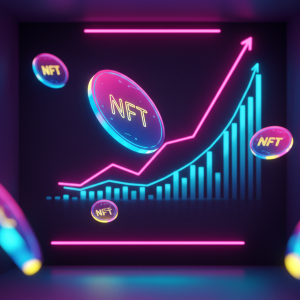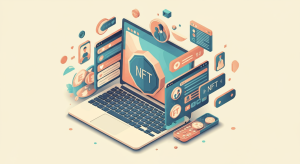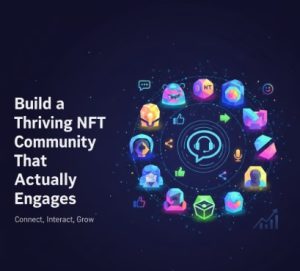NFT Token-gating: Revolutionizing Exclusive Access and Community Engagement

The evolution of non-fungible tokens has extended far beyond simple digital collectibles. One of the most transformative applications emerging in this space is token-gating – a mechanism that transforms NFTs from passive assets into active keys unlocking exclusive experiences, content, and communities. This approach fundamentally reimagines the relationship between creators and their audiences, establishing novel models for digital access and belonging.
Redefining Digital Access
Traditional online access models rely on centralized authentication systems – usernames, passwords, and subscription payments processed through intermediaries. Token-gating introduces a radically different paradigm where possession of specific blockchain assets serves as the access mechanism. This shift carries profound implications for both practical functionality and conceptual understanding of digital ownership.
The technical foundation of token-gating is elegantly simple. When a user attempts to access gated content or experiences, the system verifies blockchain wallet holdings rather than consulting a centralized database. If the wallet contains the required NFT, access is granted automatically without further authentication steps. This verification happens without transferring the asset itself, preserving the holder’s ownership while validating their access rights.
What makes this approach particularly powerful is its permissionless nature. Any creator can establish token-gated experiences without requiring approval from platform gatekeepers. Similarly, any holder of qualifying NFTs can access these experiences without establishing separate accounts or credentials for each gated environment. This reduction in friction benefits both creators and community members.
Creating Compelling Member Experiences
Forward-thinking brands and creators have begun exploring token-gating’s potential for crafting distinctive member experiences that transcend conventional approaches to audience engagement. These implementations reveal the diversity of possible applications.
Private communities represent perhaps the most widespread application. By restricting discord servers, telegram groups, or dedicated platforms to NFT holders, creators establish spaces where genuine enthusiasts can connect without the noise and disruption common in open forums. These environments foster deeper relationships between community members and with the creators themselves, building loyalty that extends beyond transactional interactions.
Exclusive content access provides another powerful use case. Musicians release token-gated tracks available solely to NFT holders. Authors publish chapters or entire works accessible only to those possessing specific digital assets. Visual artists share behind-the-scenes content, works in progress, and creative insights with their most dedicated supporters. This approach enables creators to share more vulnerable or experimental work with audiences demonstrably committed to their success.
Physical world experiences increasingly leverage token-gating mechanics as well. Major music festivals have experimented with NFT-based access credentials, offering enhanced experiences for digital asset holders. Conferences, workshops, and exclusive gatherings use on-chain verification to streamline entry while ensuring only qualified individuals gain access. This bridging of digital ownership and physical experience represents a particularly intriguing development in token-gating evolution.
Early access programs allow NFT holders privileged positions in product launches, presales, and creative releases. This approach rewards dedicated community members while providing creators valuable initial feedback and momentum. The transparent, verifiable nature of blockchain ownership makes these programs particularly effective and resistant to manipulation.
At NFTMarketo, we’ve observed that thoughtfully designed token-gating implementations consistently strengthen creator-community relationships while establishing sustainable economic models. Our analysis indicates that communities built around meaningful token-gated experiences demonstrate significantly higher retention and engagement compared to conventional approaches.
Economic Models and Value Creation
The economic implications of token-gating extend beyond simple access control, creating novel value propositions for both asset creators and holders. Several distinctive models have emerged that illustrate these possibilities.
Tiered access systems establish different privilege levels based on specific NFT holdings. Basic membership might provide community access, while rare or higher-value assets unlock premium experiences. This stratification enables price discovery while accommodating diverse commitment levels within a single community framework. Unlike traditional membership models, these tiers acquire market-determined values through secondary trading.
Temporal dynamics introduce fascinating economic considerations. Time-limited access encourages continued engagement, while perpetual access creates different valuation frameworks. Some projects experiment with decaying privileges that diminish over time unless renewed through additional actions or holdings, creating ongoing engagement incentives.
Secondary market effects significantly impact token-gated models. When NFTs controlling access to valuable experiences increase in market value, both original creators (through royalties) and initial purchasers benefit economically. This alignment of incentives encourages early support while rewarding creators for building increasingly valuable experiences.
Revenue diversification represents another important economic dimension. Creators combine primary sales, secondary royalties, and exclusive offerings behind token gates to establish multifaceted business models less dependent on advertising or platform monetization. This independence creates greater creative freedom and economic sustainability.
Implementation Challenges and Solutions
Despite its promise, token-gating faces several implementation challenges that require thoughtful solutions. Understanding these obstacles helps creators develop more effective strategies.
Technical complexity remains a significant barrier. Implementing wallet verification, managing smart contract interactions, and ensuring seamless user experiences demands specialized knowledge. However, emerging no-code and low-code solutions from platforms like Unlock Protocol increasingly simplify these processes, making token-gating accessible to non-technical creators.
Accessibility concerns warrant serious consideration. Requiring NFT purchases creates potential exclusion of community members unable or unwilling to navigate cryptocurrency acquisition and wallet setup. Thoughtful creators address this through hybrid models offering alternative access methods alongside token-gating, gradually transitioning users toward on-chain participation.
Value consistency presents ongoing challenges. Token-gated experiences must maintain sufficient value to justify asset prices and community participation. This requires sustained creative output and community nurturing beyond initial NFT sales. Projects failing to deliver continued value typically experience declining secondary prices and community disengagement.
Privacy considerations introduce additional complexity. While blockchain transactions provide transparency benefits, they also create potential privacy concerns when wallet addresses become linked to specific access patterns. Progressive projects implement privacy-enhancing measures that verify holdings without compromising user anonymity.
The Evolving Token-Gating Landscape
Token-gating continues evolving rapidly, with several emerging trends shaping its future development and application across diverse contexts.
Cross-platform compatibility represents an important frontier. Projects increasingly implement token-gating that functions consistently across multiple platforms rather than within isolated environments. This interoperability enhances NFT utility while simplifying user experience across fragmented digital ecosystems.
Dynamic access criteria introduce greater sophistication than simple ownership verification. Advanced implementations consider factors like holding duration, on-chain activity patterns, multiple token combinations, or governance participation when determining access rights. These nuanced approaches enable more refined community curation.
Temporary access models create interesting possibilities for experience sampling and progressive engagement. Time-limited access based on temporary NFT transfers or rental mechanisms allows curious newcomers to experience gated content before committing to purchases. This approach expands community reach while maintaining exclusivity.
Integration with decentralized identity systems points toward comprehensive digital credential frameworks extending beyond simple asset verification. These systems combine token holdings with reputation metrics, contribution history, and other on-chain signals to create rich member profiles that inform access and privileges.
Conclusion
Token-gating represents much more than a technical mechanism for restricting access – it fundamentally reconfigures relationships between creators and communities by transforming digital assets into meaningful participation credentials. This approach aligns economic incentives while fostering authentic connection through shared ownership and experience.
For creators and brands exploring this space, the most successful implementations focus on genuine value creation rather than artificial scarcity. They leverage token-gating not merely as an exclusion mechanism but as a foundation for community cultivation. They recognize that the true potential lies in building environments where token holders become active participants rather than passive consumers.
As technical barriers continue falling and implementation patterns mature, token-gating will likely become an increasingly standard component of digital experience design. The projects establishing thoughtful models today are pioneering engagement approaches that may become commonplace in tomorrow’s creator economy.
The most compelling aspect of this evolution may be how it rebalances digital relationships. By embedding access rights directly into transferable assets rather than centralized accounts, token-gating shifts control from platforms to participants. This realignment creates digital spaces where community members hold genuine stakes – both economical and social – in the environments they inhabit.








